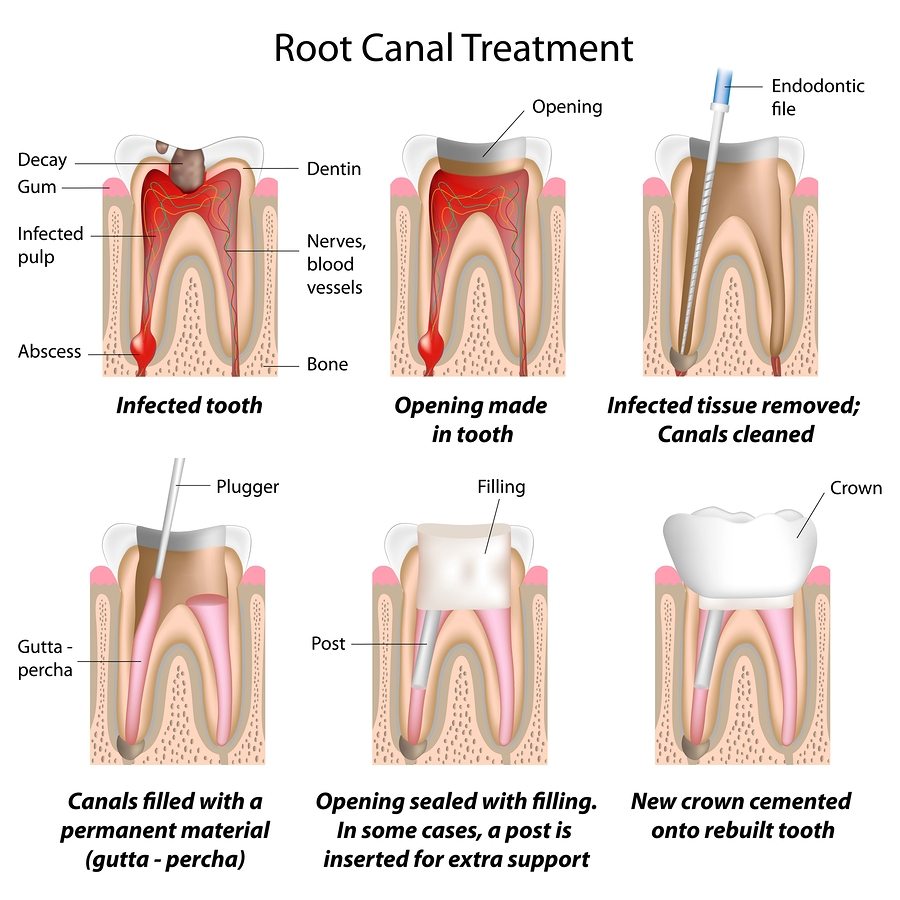Root Canal Treatment
 Root canal therapy or endodontic treatment treats teeth damaged by a large cavity. Dentists suggest root canal therapy if the pulp inside the root canal becomes inflamed and infected. If your tooth is infected, your root canal dentist in Surrey and North Delta will recommend you to go for root canal therapy. A poorly infected tooth or the one that is likely to be infected was destined to be removed long ago. Still, nowadays, general dentists and endodontists adopt a methodology to recover the infected teeth, which is known as root canal therapy. The availability of new cutting-edge dental equipment has enabled dentists to rescue and save the teeth that were evicted to relieve the pain in the past.
Root canal therapy or endodontic treatment treats teeth damaged by a large cavity. Dentists suggest root canal therapy if the pulp inside the root canal becomes inflamed and infected. If your tooth is infected, your root canal dentist in Surrey and North Delta will recommend you to go for root canal therapy. A poorly infected tooth or the one that is likely to be infected was destined to be removed long ago. Still, nowadays, general dentists and endodontists adopt a methodology to recover the infected teeth, which is known as root canal therapy. The availability of new cutting-edge dental equipment has enabled dentists to rescue and save the teeth that were evicted to relieve the pain in the past.
Symptoms of the Root Canal Therapy:
If you are uncertain whether you would be a candidate for a root canal, then there are a few things to consider.
- While biting, there could be a sudden pain. If the pain is persistent or occurs at intervals, then you must be concerned.
- Feel sensitivity to hot and cold beverages and food items.
- The decay has widened with time, the teeth have been infected, and are now affecting the bones in surrounding areas.
- Pain is caused by the pressure of chewing or as an extended reaction to contact with hot and cold temperatures.
How is the root canal treatment carried out?

If you observe any of these symptoms, then you must consult a root canal dentist immediately. Depending on the severity of the emergency, you will be directed by our dentist. If you are wondering how root canal therapy is carried out, here is the step-by-step procedure:
- The first thing is the diagnosis of your teeth once you have revealed that you are having the symptoms mentioned above. After diagnosis, the first step will be the X-ray taking phase, in which the dentist will examine the severity of the issue and locate the infection and decay.
- You will be given a local anesthetic.
- The infected and inflamed tissue that lies inside the root of the tooth will be withdrawn. The infected pulp tissue subsequently causes an abscess.
- Once the length of the root canal is ascertained, the infected pulp will be removed.
- The canal where the nerve is positioned will be redesigned and ready to fill the special root canal filling material on the same visit.
- The last step of Root Canal Therapy will be the filling of the root canal with a permanent material. Normally, this is done with a material known as gutta-percha. This filling is for the sake of future contamination and infection in the canal of the teeth.
The number of visits depends on several factors, such as: the number of nerve supplies to the tooth, the condition of the affected tissues, and the complications of the procedure. After completing the filling procedure, the tooth will surely need a crown, core, and post to restore its original condition and firmness regarding functioning. However, this planning depends upon many supplementary factors.
The root canal treatment is painless if it is treated early. The administration of local anesthetic numbs the tooth and its surroundings which makes the whole procedure run smoothly.